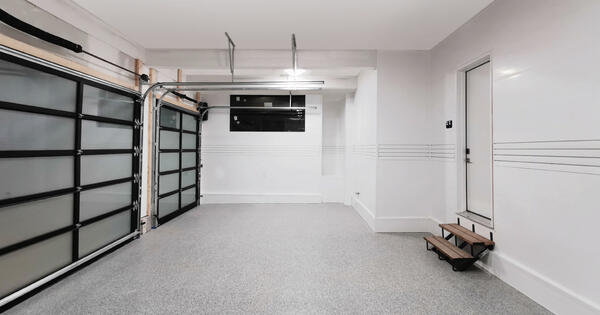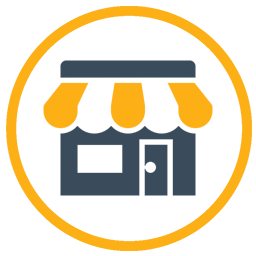Mold is an unwelcome guest in our homes that, if left unchecked, can wreak havoc on our health and property values. As homeowners, we know that the bathroom is a prime breeding ground for mold, particularly on the ceiling.
In this blog post, we dive into the causes behind mold growth on bathroom ceilings, how to detect it early on, and, most importantly, how to safely remove it as a DIYer.
5 Causes of Mold Growth on Bathroom Ceilings
Why is mold so likely to grow in bathrooms? There are five key factors that contribute to its growth:
- Poor Ventilation: Inadequate ventilation sets the stage for mold to flourish. Bathrooms without proper airflow trap moisture, creating an ideal environment for mold spores to settle and proliferate.
- High Humidity: Moisture is the lifeblood of mold. High humidity levels, often a result of hot showers and poor ventilation, provide the perfect conditions for mold to thrive.
- Water Leaks: Persistent water leaks are a silent invitation to mold. Leaky pipes, faucets, or a poorly sealed shower can introduce moisture, giving mold the opportunity it needs to grow.
- Stagnant Water: Standing water in the bathroom, whether from a leak or poor drainage, becomes a breeding ground for mold.
- Lack of Natural Light: Mold prefers dark, damp environments. If your bathroom lacks sufficient natural light, it creates an environment where mold can take root and grow unnoticed.

How to Detect Mold Growth on Your Bathroom Ceiling
Spotting mold early is key to preventing extensive damage. Here are a few telltale signs of mold growth on your bathroom ceiling:
- Visual Discoloration: Regularly inspect your bathroom ceiling for any discoloration, dark spots, or unusual patches. Mold often appears as black, green, or brownish stains.
- Musty Odors: Mold has a distinct musty smell. If your bathroom consistently emits an unpleasant odor, it's time to investigate for potential mold growth.
- Allergic Reactions or Respiratory Symptoms: If you or others in your home have been sneezing, coughing, or experiencing nasal congestion, or if there's an unexplained worsening of respiratory symptoms, it could be due to mold presence. Pets can also show allergic reactions or unusual health issues if there's mold growth somewhere in your home.
- High Humidity: If the humidity level in your home is consistently high (above 60%), it increases the likelihood of mold growth.
- Recent Water Damage: If an area has experienced recent water damage, such as leaks, flooding, or plumbing issues, it's more prone to mold growth.



How to Remove Mold from Your Bathroom Ceiling as a DIYer
So, you've spotted the mold on your bathroom ceiling, and it's time to roll up your sleeves and get rid of it. Here's an in-depth guide on how to safely and effectively remove mold as a DIYer.
Step 1: Gather Your Supplies
Here’s a list of safety equipment and mold removal items and tools you’ll likely need to minimize exposure and make mold-fighting easier:
- Gloves
- Goggles
- N95 respirator mask
- Plastic sheets
- Duct tape
- Cloth or sponge
- Scrub brush or scrubbing pad
- Non-ammonia detergent, dish soap, or specialized mold cleaner
- Water
- Bucket
- Fans or dehumidifiers
- Vacuum cleaner with HEPA filter
- Plastic bags for disposal
- Bleach (optional, for non-porous surfaces)
- Hydrogen peroxide (optional, for porous surfaces)
Step 2: Preparing Your Bathroom for Mold Removal
Begin by preparing the area for mold removal:
- Isolate the Space: Close off the affected bathroom area from the rest of your home. This prevents mold spores from circulating through the air. Using plastic sheeting and tape, create a containment barrier around the affected area. Cover your sink, toilet, and shower. This barrier ensures that mold spores released during cleaning are confined, minimizing the risk of cross-contamination.
- Turn Off HVAC Systems: Disable heating, ventilation, and air conditioning systems to prevent the spread of mold spores.
- Ventilation: Open windows and doors or use fans to ensure proper ventilation during the removal process.
Step 3: Removing Mold from Your Bathroom Ceiling
Now, let's get down to business. Follow these steps to effectively remove mold from your bathroom ceiling:
- Wet the Mold: Lightly mist the moldy area with water to reduce the likelihood of mold spores becoming airborne during cleaning.
- Prepare Your Cleaning Solution: Mix a solution of water and non-ammonia detergent, dish soap, or a specialized mold cleaner according to the manufacturer's instructions.
- Apply Mold Remover: Use a cloth or sponge to apply the chosen mold-removing solution to the affected areas. Let it sit for the recommended dwell time, usually 10 to 15 minutes, to break down and loosen the mold.
- Scrub Gently: Take your brush or sponge and scrub the mold gently. Work in a circular motion, applying consistent but not excessive pressure. Be cautious not to damage the ceiling surface.
- Rinse and Dry: Rinse the cleaned area with clean water, ensuring all remnants of the mold-removing solution are removed. Use a clean cloth or towel to dry the surface thoroughly.
- Optional! Disinfect the Area: Once you’ve rinsed and dried the affected area, you can take an extra, optional step to help disinfect the area and prevent future mold growth. For a non-porous surface, mix a solution of one part bleach to ten parts water. Apply the bleach solution to the cleaned area. Allow the solution to sit for about 15 minutes before rinsing and drying the area. For a porous surface, apply 3% hydrogen peroxide directly to the moldy area and let it sit for 10 minutes. Scrub gently with a brush, rinse, and dry thoroughly.
- Disposal of Materials: Dispose of any materials, like the brush or sponge, used during the cleaning process. If the mold has infiltrated porous materials like ceiling tiles, drywall, or insulation, it's safer to remove and replace them.
- Perform a Post-Cleaning Inspection: Once the mold is removed, conduct a thorough inspection to ensure no mold remnants are left behind. Check corners, seams, and other hidden areas where mold might still lurk.
Step 4: Take Prevention Measures to Avoid More Mold Growth
To prevent mold from returning, implement the following measures:
- Improve Ventilation: Address ventilation issues in your bathroom by installing exhaust fans or opening windows during and after showers.
- Fix Water Leaks Promptly: Address any water leaks immediately. Regularly check faucets, pipes, and shower fixtures for signs of leakage and repair them promptly.
- Choose Moisture-Resistant Building Materials: If you have to remove or replace moldy drywall, make the switch to a moisture-resistant PVC ceiling panel like Trusscore Wall&CeilingBoard. Panels are 100% waterproof and install with a watertight seal – they’ll never grow mold or mildew and can easily be cleaned with your favorite bathroom cleaner.
- Use Mold-Resistant Paint: If you’re sticking with drywall, consider using mold-resistant paint on bathroom ceilings. This type of paint inhibits the growth of mold and mildew.
- Keep the Bathroom Dry: Wipe down surfaces after use and invest in moisture-absorbing products like desiccants or a dehumidifier to keep your bathroom dry.

When to Bring in a Professional Mold Remediator
Recognizing when mold growth is beyond the scope of DIY remediation is crucial. Here are signs it's time to call in the professionals:
- Extensive Mold Growth: If the affected area is large or if mold has spread to multiple areas, it's time to seek professional help.
- Health Concerns: Persistent health issues like respiratory problems or allergic reactions may indicate a more significant mold problem that requires professional remediation.
- Hidden Mold: If you suspect mold is lurking behind walls or ceiling structures, professionals can conduct thorough inspections and address hidden mold sources.
To ensure you’re hiring a reliable mold remediator, take the following steps:
- Check Credentials: Ensure the company is certified and has the necessary licenses for mold remediation services.
- Read Reviews: Look for reviews and testimonials from previous customers to gauge the company's reputation.
- Ask for References: Request references and contact them to get firsthand insights into the company's performance.
How to Prevent Mold Growth in Other Areas of Your Home
While we've focused on the bathroom ceiling, preventing mold should be a holistic effort. Consider these strategies for a mold-free home:
- Address Roof Leaks: Regularly inspect and repair any roof leaks promptly. A leaky roof can introduce moisture into your home, creating an ideal environment for mold growth.
- Proper Insulation: Ensure your home is adequately insulated to prevent condensation and moisture buildup in walls and ceilings.
- Exterior Drainage: Proper drainage around your home's exterior prevents water accumulation, reducing the risk of mold growth in basements and crawlspaces.


Protect Your Bathroom Ceiling from Mold by Installing a Mold-Resistant Drywall Alternative
Ultimately, the best way to fight mold in your bathroom is by installing a wall and ceiling solution that gives it nowhere to grow. Waterproof Trusscore Wall&CeilingBoard is your best option.
Trusscore Wall&CeilingBoard is a non-porous, PVC-based wall and ceiling panel that is 100% moisture and water-resistant. Unlike drywall, Trusscore is designed to shed water and install with a watertight seal, preventing moisture and water from seeping into your ceiling. Plus, panels are antimicrobial, so they’ll never grow mold or mildew. Make the switch from drywall to Trusscore Wall&CeilingBoard today by finding a retailer near you — your future self will thank you.
In the battle against mold, proactive prevention is the key to a healthier home. By understanding the causes, detecting early signs, and implementing effective removal and prevention strategies, you can safeguard your bathroom ceiling and, by extension, your entire home. Don't wait for mold to become a serious issue – take charge and create a mold-free living environment for you and your family.






